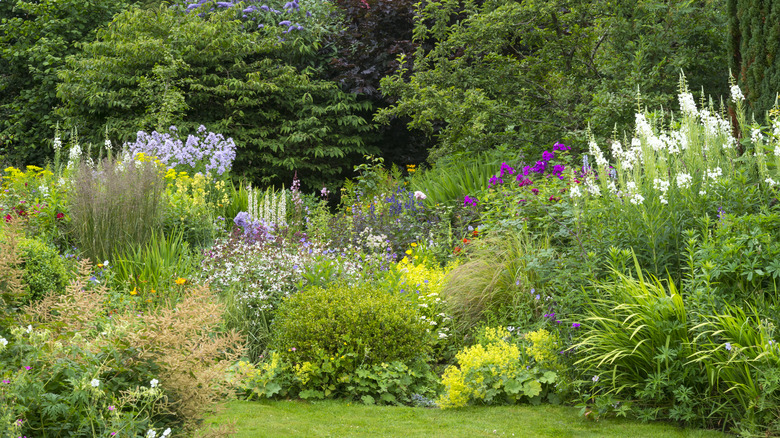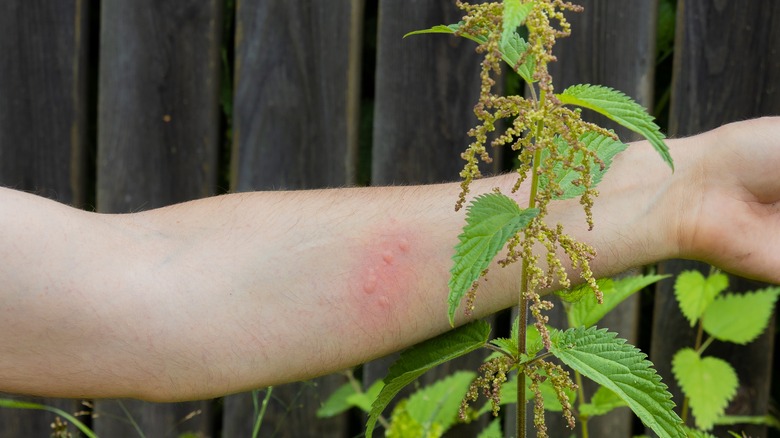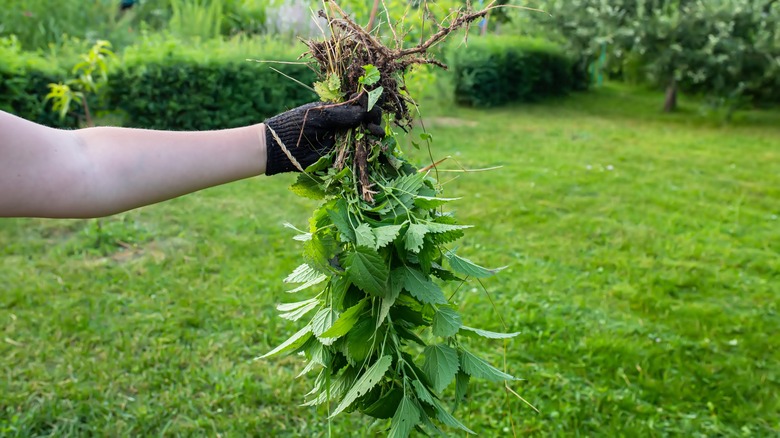The White Flowering Weed You Should Consider Removing From Your Grass
As a child, you probably learned about several fascinating native plants while playing in the woods, many of which you may have learned about the hard way. If you grew up in North America, particularly in the western United States, stinging nettle (Urtica dioica) was likely one of the first weeds you encountered early on in your play days — and hoped never to encounter again. It might sound obvious that any weed should be plucked from your yard, but the stinging nettle isn't all bad. In fact, this perennial herb is a weed that you can grow and use to water your garden like an organic fertilizer or even use as a medicinal herb to treat muscle pain, arthritis, eczema, hay fever, and more. But unless you're carefully growing this plant for a specific purpose, it's likely to bring more harm than good to your yard. As the name might imply, stinging nettle can be very unpleasant to touch, so it's terrible to have in areas where you or your family tend to walk, lounge, and play.
This leafy plant in your yard may look relatively harmless from a distance, but it's much better to be safe than scratchy. Left unattended, stinging nettle may also wreak havoc on your lawn and quickly grow out of control. Here's what you need to know about stinging nettle, the painful reactions it can cause, and how to safely remove and dispose of it.
Stinging nettle delivers a painful rash
Also known as stinging nettle or common nettle, this weed is actually good to grow, but not around children and pets. This plant grows about 2 to 4 feet high, with a rigid stalk, alternating fine-toothed leaves, and small pale flowers that emerge in late spring through fall. The undersides of the nettle's leaves and stems carry the most stinging hairs, which release a handful of irritating chemicals and histamines, namely, formic acid. If you brush up against a stinging nettle plant, you may experience a painful stinging sensation almost immediately, with an itchy, red, and bumpy rash appearing soon after. Stinging nettle usually yields a milder reaction than poison ivy, but some people could experience severe symptoms, such as full-body rashes, tongue swelling, and difficulty breathing.
Aside from the physical harm it can cause you and your family, stinging nettle is also an aggressive grower that can quickly get out of hand in your yard. These plants will overtake and outcompete other plants, especially smaller, weaker plants like grass. It can spread through both wind-dispersed seeds and rhizomes, underground stems that spread outward or fragment to produce new plants. This can make them difficult to control and even harder to get rid of completely.
How to safely get rid of stinging nettles
Stinging nettle tends to grow in areas where the soil has been razed or disturbed, such as fencelines, river banks, roadside trenches, and orchards. While it doesn't usually take over flower beds or other carefully manicured areas, it can be a nuisance to deal with around the borders of your property. To keep from incurring the stinging nettle's painful rash, it's crucial to wear thick gloves before attempting to remove the plant. Grasp the base of the stem and pull swiftly upwards to remove the weed, then dig out the roots. Alternatively, you can mow or use a weedeater to cut down the plants, then come back through with a garden hoe or shovel to remove the roots and rhizomes and prevent new shoots from returning.
Disposing of your stinging nettle the right way is also important. While the plant can be composted or brewed into a DIY fertilizer you can make to nourish your garden, you should avoid tossing the roots into compost, or else the rhizomes might spread. Similarly, remember not to move the soil to un-nettled areas, such as a garden bed or planter pots, and after digging out old nettles, keep a vigilant eye out for any baby plants that may spring up.


